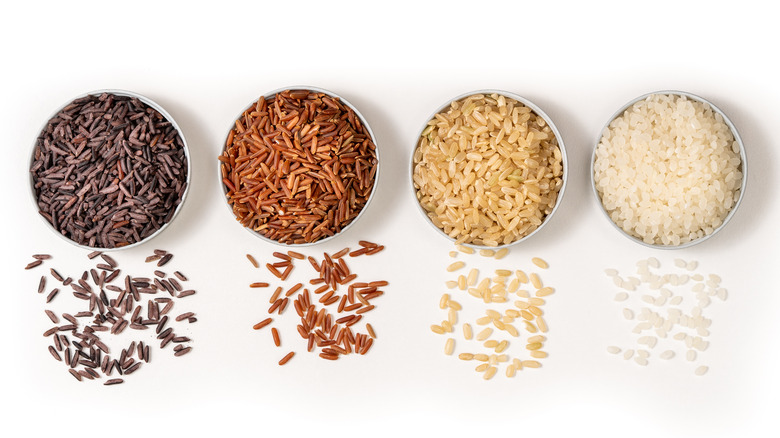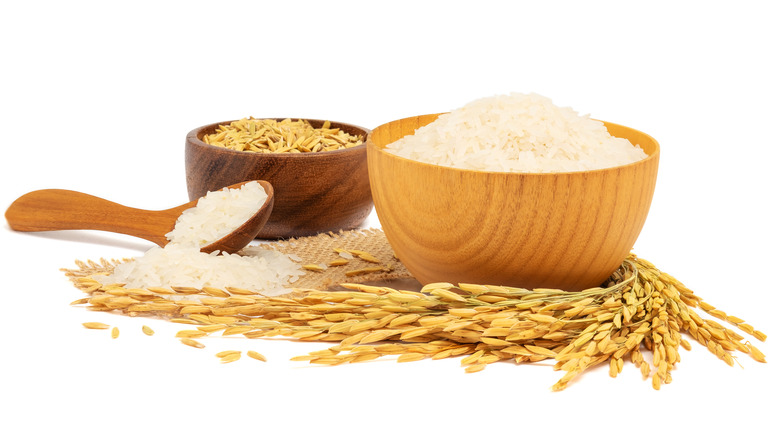What Is The Healthiest Type Of Rice?
Rice is a common staple for many meals. It's versatile, fairly simple to prepare, and pairs well with a number of dishes. According to USA Rice, there are approximately 120,000 types of rice in the world. With so many rice options, you might be wondering which kind is the healthiest.
When it comes to nutrition per bite, black rice is the winner, with red rice coming in at a close second (via Healthline). What makes these types of rice so healthy is the high amount of antioxidants they contain. Specifically, they contain an antioxidant known as anthocyanin, one spoonful of which has more antioxidants than an equal amount of blueberries (via American Chemical Society). Anthocyanins are great at reducing inflammation and help cut the risk of heart disease. Moreover, they may also help lower blood pressure and could even play a part in preventing type 2 diabetes (via The Healthy).
How wild rice, brown rice, and white rice compare
Comparatively, wild rice is also nutritious, although it's technically not rice at all. According to Taste of Home, wild rice is a variety of grass. It has fewer calories than brown rice, with more than twice the amount of protein per serving. Wild rice provides all of the essential amino acids that our bodies need, and they aid in building muscle, boosting the immune system, and managing the metabolism.
Brown rice, like wild rice, also offers nutrients like magnesium, manganese, and phosphorus. It has more vitamin B than wild rice, which makes it a nice choice for vegans and vegetarians. Brown rice also provides more fiber and protein than white rice.
Generally speaking, white rice, including white jasmine and basmati, is the processed version of its brown counterpart. While many versions of white rice taste and smell different, many of the nutrients are removed when the outer hull is discarded (via Medical News Today). However, some white rice varieties are enriched, which means that some of the nutrients are added back in. The glycemic index for white rice is 64, which is slightly higher than brown rice at 55, making it a poor choice for those at risk for diabetes (via Harvard T.H. Chan School of Public Health).
When preparing your next meal, in addition to taste and texture, perhaps also consider the amount of nutrients you can gain when selecting a type of rice to eat.


